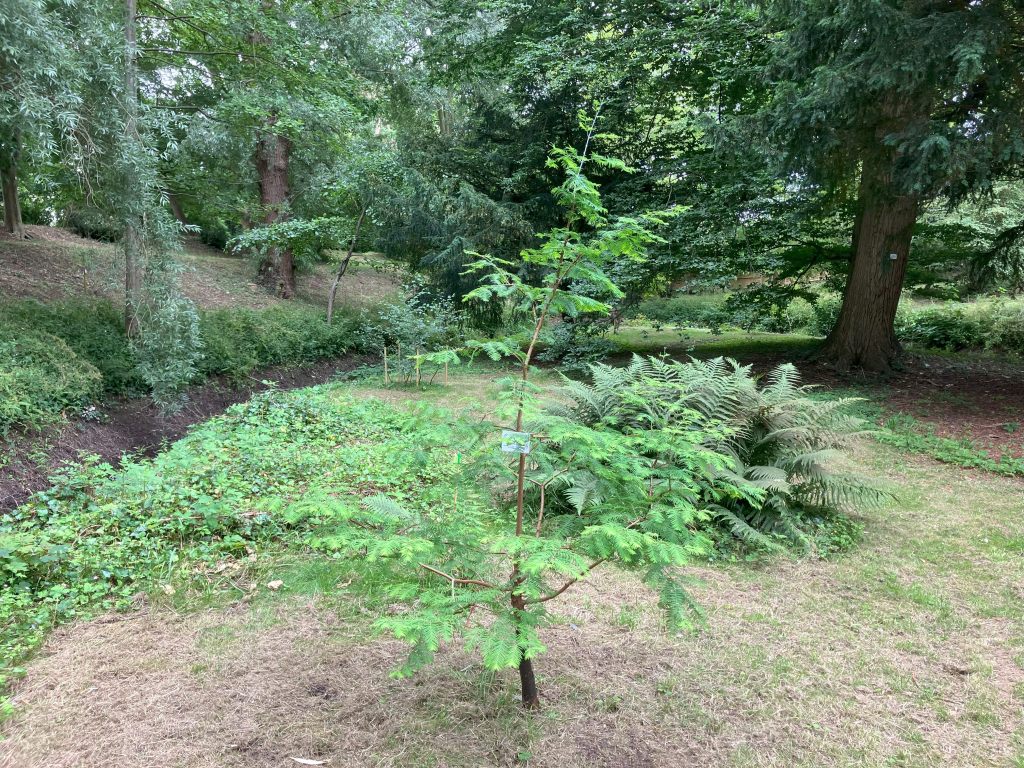#528 (AA2) DAWN REDWOOD
Metasequoia glyptostroboides

Planted: 2020
At the eastern end of the island.
| Genus: | The sole living species of the genus Metasequoia, one of three genera in the subfamily Sequoioideae of the family Cupressaceae. It now survives in the wild only in wet lower slopes of mountain rivers in south-central China. |
| Distribution: | In 1941, the genus Metasequoia was reported by paleobotanist Shigeru Miki as a widely distributed extinct genus based on fossils. A few years later a small population were found alive in central China. |
| Planting Date: | 2020 |
| Appearance: | It differs from the coast redwood in that it is deciduous. A fast-growing tree, exceeding 35 m in height and 1 m in trunk diameter by the age of 50, in cultivation (with the potential to grow to even greater dimensions). The trunk forms a distinctive “armpit” under each branch. |
| Bark: | The bark is vertically fissured and tends to exfoliate in ribbon-like strips. |
| Leaf: | Leaves are opposite, 1 to 3 cm long, and bright fresh green, turning a foxy reddish brown in autumn. |
| Fruit: | The pollen cones are 5 to 6 mm long, produced on long spikes in early Spring; but only on trees growing in regions with hot summers. The cones are globose to ovoid, 1.5 to 2.5 cm in diameter with 16 to 28 scales arranged in opposite pairs in four rows, each pair at right angles to the adjacent pair. |
| Ultimate height: | Although the shortest of the redwoods, it can grow to 51 m in height. |
| Uses: | Ornamental |
| Introduction Date: | In July 1947, the Arnold Arboretum of Harvard University provided $250 to fund an expedition by Zheng Wanjun’s assistant Hua Jingchan to collect seeds for the arboretum from the Metasequoia type tree. Hua’s collecting trip returned with several kilos of seed that were distributed over the next few months for growth trials to institutions in China the US and Europe – including Kew and Edinburgh botanic gardens. |
| Anecdotes and Comments | The largest dawn redwood recorded was an isolated specimen in China about 50 m tall and 2.2 m wide. This tree was killed by a lightning strike in 1951. Several dawn redwoods of this height still live in the eastern part of Metasequoia Valley, where the tree was discovered. The tree’s true potential size is much larger, as logs up to 8 m wide at the base have been discovered in rice paddies. |